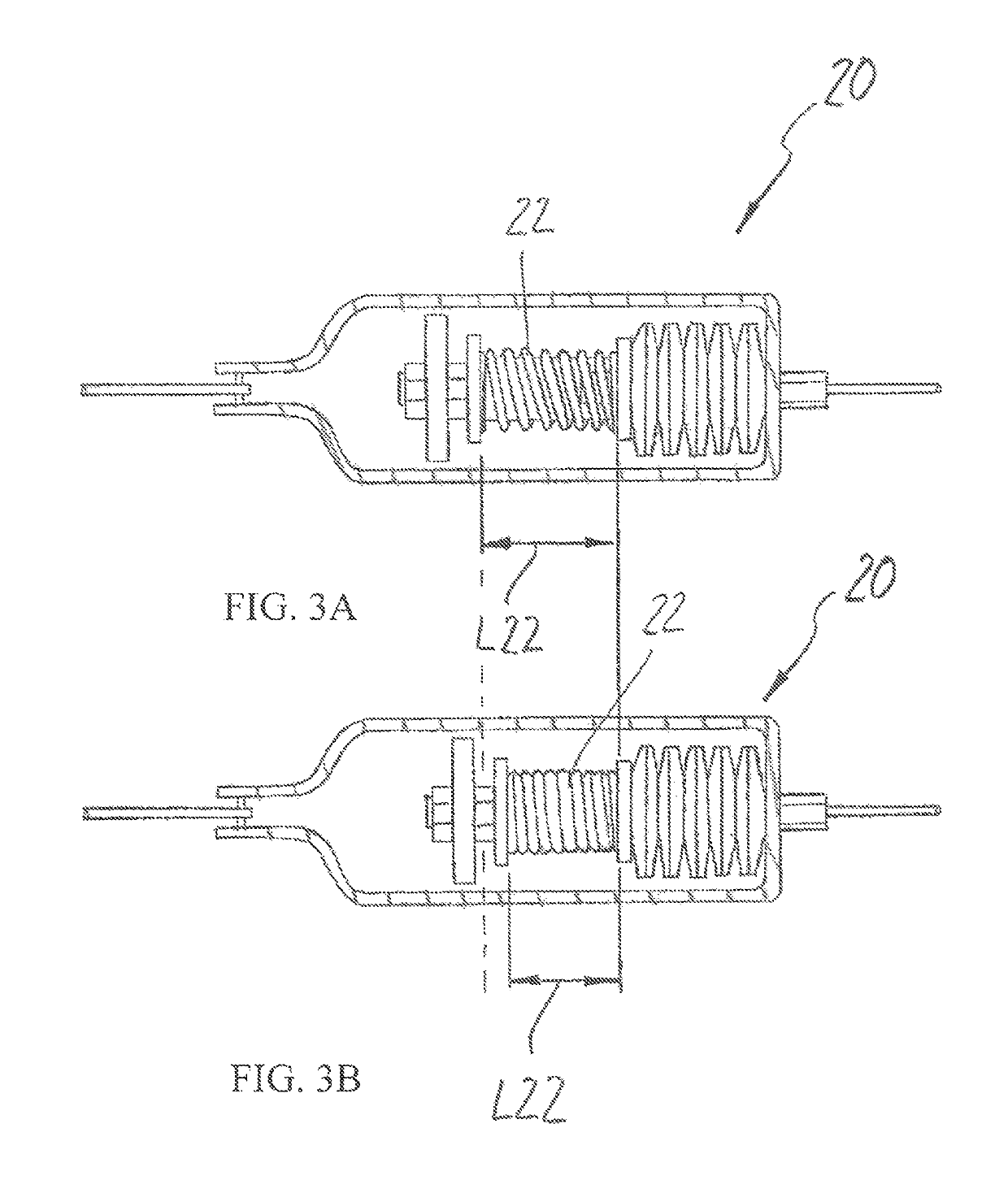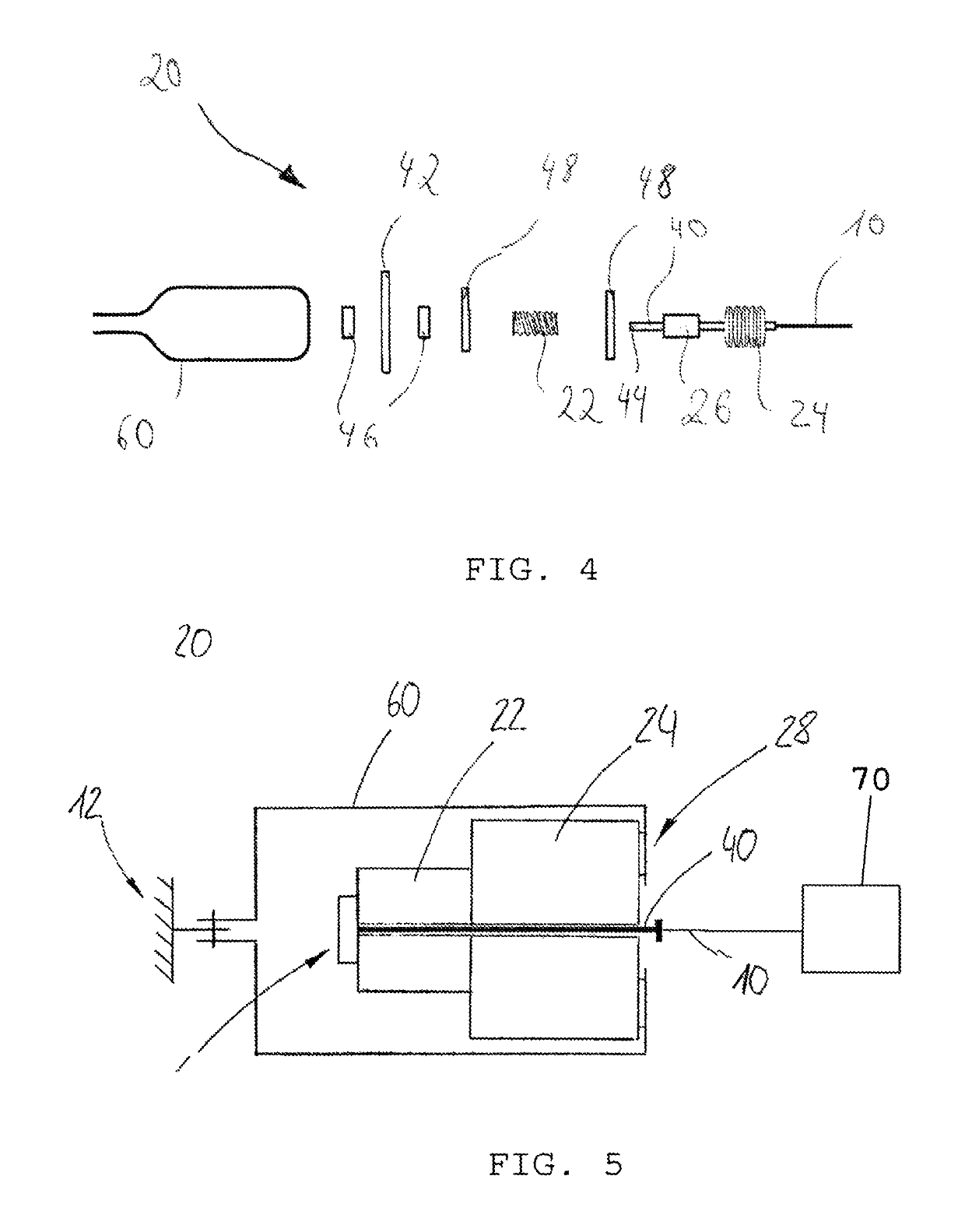Tensioning unit
a technology of tensioning unit and spring element, which is applied in the direction of connection, basic electric element, belt/chain/gearing, etc., can solve the problems of over-tensioning or too little tensioning of pull elements, and achieve the effect of reducing the length of the spring elemen
- Summary
- Abstract
- Description
- Claims
- Application Information
AI Technical Summary
Benefits of technology
Problems solved by technology
Method used
Image
Examples
Embodiment Construction
[0033]FIG. 1 shows a tensioning unit 20, which is arranged between two pull elements 10a, 10b. The left pull element 10a is arranged on a spring element 24 via an external transmission element 60, which is of essentially bow-shaped construction. The spring element 24 consists of ten disc springs in a series connection. A tensioning element 22 is arranged next to the spring element 24 or in series with the same. The tensioning element 22 is in turn arranged between two intermediate washers 48. The tensioning element 22 is constructed as a coil spring and maximally pretensioned in a mounting state shown in FIG. 1. In this state, it has a length L22, which is measured between the two intermediate washers 48. Arranged within the tensioning element 22 is a boundary element, which cannot be seen inFIG. 1, however, as the tensioning element 22 or the coil spring is completely pretensioned and the windings make it impossible to see “inside”. Nuts 46 are provided in order to apply e.g. the p...
PUM
 Login to View More
Login to View More Abstract
Description
Claims
Application Information
 Login to View More
Login to View More - R&D
- Intellectual Property
- Life Sciences
- Materials
- Tech Scout
- Unparalleled Data Quality
- Higher Quality Content
- 60% Fewer Hallucinations
Browse by: Latest US Patents, China's latest patents, Technical Efficacy Thesaurus, Application Domain, Technology Topic, Popular Technical Reports.
© 2025 PatSnap. All rights reserved.Legal|Privacy policy|Modern Slavery Act Transparency Statement|Sitemap|About US| Contact US: help@patsnap.com



